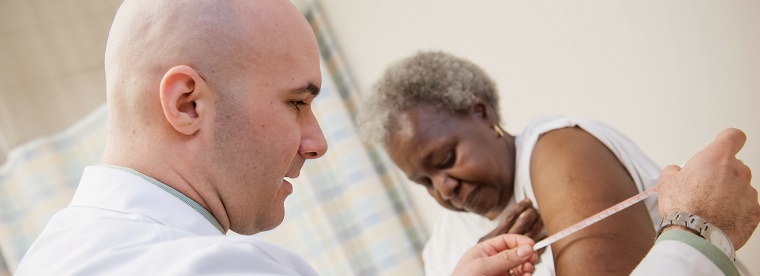For cancer patients, and their loved ones, there is a lot focus placed on the present moment. What courses of treatment make the most sense for them? How will their diagnosis change their life? Will they need to take time off from work? Can they even plan for the future, or is their life now on hold?
But what about the unknowns that are beyond the scope of treatment administration? How will cancer patients experience potential side effects? Will they be able to resume their daily lives, unimpeded? What will their lives look like after treatment?
In short, what will their cancer rehabilitation process look like, and when should it start?
What Is Cancer Rehabilitation?
Cancer rehabilitation helps patients address many of the challenges they experience beyond the treatment of their cancer. For example, bouts of pain or fatigue when attempting to complete daily tasks, difficulty speaking or swallowing, or mobility and balance issues. And according to Eric Wisotzky, MD, a physical medicine and rehabilitation specialist who directs the MedStar National Rehabilitation Network’s Cancer Rehabilitation Program, early intervention in this regard can be critical.
“We can identify issues that are likely to cause problems in the healing process and prevent many from occurring,” Dr. Wisotzky says.
The ultimate goal of cancer rehabilitation is to maximize every opportunity to enhance a patient’s ability to get back to their lives, their job, their family and their priorities. More specifically, cancer rehabilitation can help a patient gain endurance and mobility, in addition to what may feel like their lost sense of independence.
What Should a Cancer Rehabilitation Program Look Like?
The most successful cancer rehabilitation outcomes are achieved when it is integrated into both treatment and survivorship plans and include:
- Comprehensive, interdisciplinary rehabilitation services (physiatry, physical therapy, occupational therapy, speech language pathology)
- Individualized treatment plans
- Pretreatment assessments (if indicated) and patient education
- Post-treatment assessment and follow up
- Lymphedema (swelling) management services
- Exercise and fitness programs
- Pain management
- Nutrition counseling
- Prosthetics and orthotics
At the MedStar National Rehabilitation Network, the rehabilitation program may begin with a pretreatment assessment, which covers the current health status of a patient, as well as their functional needs and goals. A multidisciplinary rehabilitation team then supports patients with actionable insights to help prevent a decline in function.
After treatment, patients are closely followed for the development of functional deficits. Once identified, patients are again referred for rehabilitation services to minimize side effects of cancer treatment and to help patients continue their work, family and recreational roles.
Cancer Rehabilitation Empowers Patients
A cancer diagnosis, even with the most positive outlook, is still both emotionally and physically disruptive. However, a multidisciplinary approach that includes cancer rehabilitation can make all the difference, when it comes to improving quality of life.
Ideally, patients will come out of their cancer treatment experience with the tools to live an even healthier life than before their diagnosis. Cancer rehabilitation can be a springboard to helping patients improve their general fitness. “We can empower patients to do the things that will keep them as fit and functional as possible throughout the process and beyond,” Dr. Wisotzky says.
Through these interventions, we hope that our patients can not only survive the cancer treatment process, but thrive into the future.

